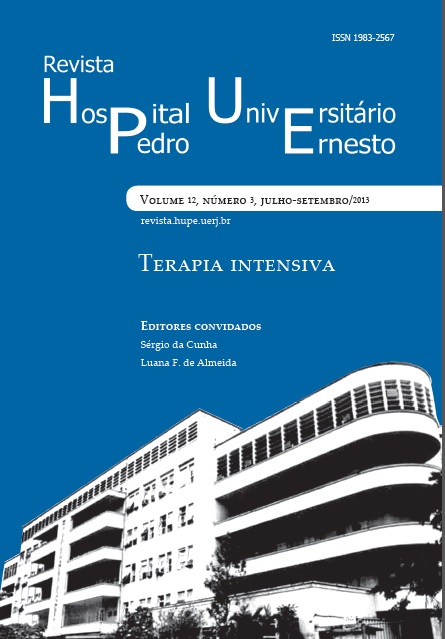Por uma rotina no transporte intra-hospitalar: elementos fundamentais para a segurança do paciente crítico
DOI:
https://doi.org/10.12957/rhupe.2013.7541Resumo
O transporte intra-hospitalar é um procedimento corriqueiro nas unidades de terapia intensivae é frequentemente desvalorizado por acontecer dentro do ambiente hospitalar e ser acompanhado por profissionais durante seu percurso. Buscou-se investigar dinâmicas mais adequadaspara a realização do transporte intra-hospitalardo paciente crítico, com vistas a estimular reflexõese possíveis adequações, por parte dosprofissionais de saúde, acerca da segurançaindispensável no transporte do paciente gravemente enfermo. Foram realizadas pesquisas nasbases de dados on-line Scientif Eletronic LibraryOnline (SciELO), Literatura Latino-Americanae do Caribe (LILACS) e Medical LiteratureAnalysis and Retrieval System Online (MEDLINE) disponíveis na Biblioteca Virtual de Saúde(BVS), do Ministério da Saúde/Brasil, além depublicações de órgãos e autores competentes sobreo assunto. Evidencia-se que o planejamento,a participação de profissionais qualificados e ouso de equipamentos adequados de monitorizaçãosão considerados essenciais para umtransporte seguro, sendo fundamentais para adiminuição de intercorrências durante esse procedimento.Para melhor compreensão de todoo processo, o transporte intra-hospitalar podeser dividido em três fases que são: o preparo dopaciente, equipamentos e materiais; o transporte propriamente dito; e o regresso do paciente. A segurança do paciente durante todo o procedimento é necessária a fim de contribuir para oum melhor prognóstico. Pode-se observar, desta maneira, que a existência de um instrumentoque norteie as ações dos profissionais quantoà realização do transporte intra-hospitalar é de suma importância para a segurança do paciente, sobretudo daquele internado em unidade deterapia intensiva (UTI). Diante de estudos eda indissociável necessidade da realização de transporte intra-hospitalar, verifica-se o quantoé imperativo a busca por meios para a reduçãoe até mesmo a eliminação dos eventos adversos relacionados a esse procedimento.
Revista HUPE, Rio de Janeiro, 2013;12(3):138-146
doi:10.12957/rhupe.2013.7541


